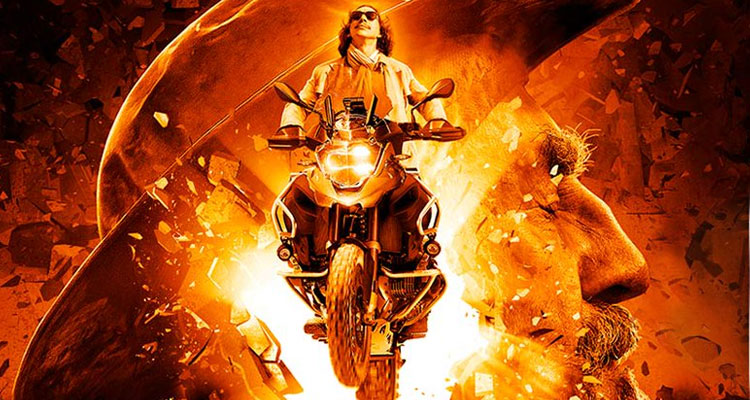The Man Who Killed Don Quixote (Spain / Belgium / France / UK / Portugal / 15A / 133 mins)
In short: Gilliam delivers
Directed by Terry Gilliam. Starring Adam Driver, Jonathan Pryce, Joana Ribeiro, Olga Kurylenko, Jordi Molla, Stellan Skarsgard.
The Plot: On location in Spain, director Toby (Adam Driver) is making a film about Don Quixote, the famed Spanish knight and defender of chivalry. There’s more offscreen drama though when he has flirtations with Jacqui (Olga Kurylenko), the wife of his boss (Stellan Starsgard). A chance encounter one night brings back memories of the student film he made a decade earlier in the village, also about Don Quixote. He remembers the humble shoemaker (Jonathan Pryce) he cast as Don Quixote, along with the innkeeper’s daughter Angelica (Joana Ribeiro). When Toby goes on the run from trouble, he re-encounters the shoemaker who in true Method fashion still believes himself to be the incarnation of Don Quixote. Convinced that Toby is his trusty sidekick Sancho Panza, the two go on an adventure blending reality and fantasy…
The Verdict: If at first you don’t succeed, then keep on trying. And trying. God loves a trier and Terry Gilliam never gave up on his passion project The Man Who Killed Don Quixote. The cursed history of this uniquely Gilliam concoction is well-known. In short, it involved eight attempts to get it off the ground since 1989. Cursed with flash floods, the death of actors and financial woes, it’s rumoured to be the most cursed production in history. There was a documentary made about it called Lost In La Mancha, but there’s enough production history here to fill several documentaries. However, in 2017 he finally got it into production with a new cast and somehow managed to get it finished without any mishaps. Though, it has taken a while to reach these shores (the US release was last spring). Was it worth the epic wait in the end? Absolutely.
Gilliam is known as one of cinema’s greatest fantasists. Blessed with an imagination that stretches to the very corners of the cinema screen, the former Monty Python creates visually dazzling films which tickle the funny bone as well as the heart. The Man Who Killed Don Quixote has more than a touch of meta about it, given that Toby is also a director stuck in a troubled production of the famed 17th Century book by Miguel de Cervantes. Gilliam’s imagination is an ideal fit for this material and his script with Toni Grisoni is more focused than usual. Gilliam can be guilty of losing himself in his own films and letting the visuals takeover to the detriment of the script (The Adventures Of Baron Munchausen being a good example). He’s wisely tried something different with the time-travel element to the story.
In a previous Johnny Depp-starring iteration of the script, Toby gets a knock on the head and finds himself in the 17th Century, a more obvious storytelling device. This time around, Gilliam keeps the story in the present day but mixes it up by having period elements enter the modern narrative and vice versa. What we’re watching may not be real, or it least seems real to both Don Quixote and Toby. That blending of modern-day reality with quixotic fantasy, along with Toby’s faltering memories of people and places lends the film a quirky but engaging quality. It drives the film along at a jaunty pace, though it’s a touch overlong. It’s episodic by its very nature, with supporting characters flitting in and out of the story and apparent time period. It tends to meander and digress at times, but Gilliam pulls it back in time to keep Toby’s journey on track.
Speaking of whom, Adam Driver is inspired casting as Toby (we can thank Gilliam’s daughter for that). Known for his intense and brooding performances, he’s surprisingly light and funny here. He even does a Broadway song-and-dance routine which shows him in tune with Gilliam’s often broad sense of humour. After pestering Gilliam for years to play the role, Jonathan Pryce makes for an eccentric but engaging Don Quixote – a knight in faded armour out of his own time and lost in another. There’s much to enjoy here, from the flights of fantasy to the striking production design and especially the scenic Spanish and Portuguese locations. Now that his white elephant has been put to rest, what will trouble Gilliam now? It may not matter. He finally got his passion project into cinemas and for that reason alone, it demands your attention.
Rating: 3.5 / 5
Review by Gareth O’Connor


